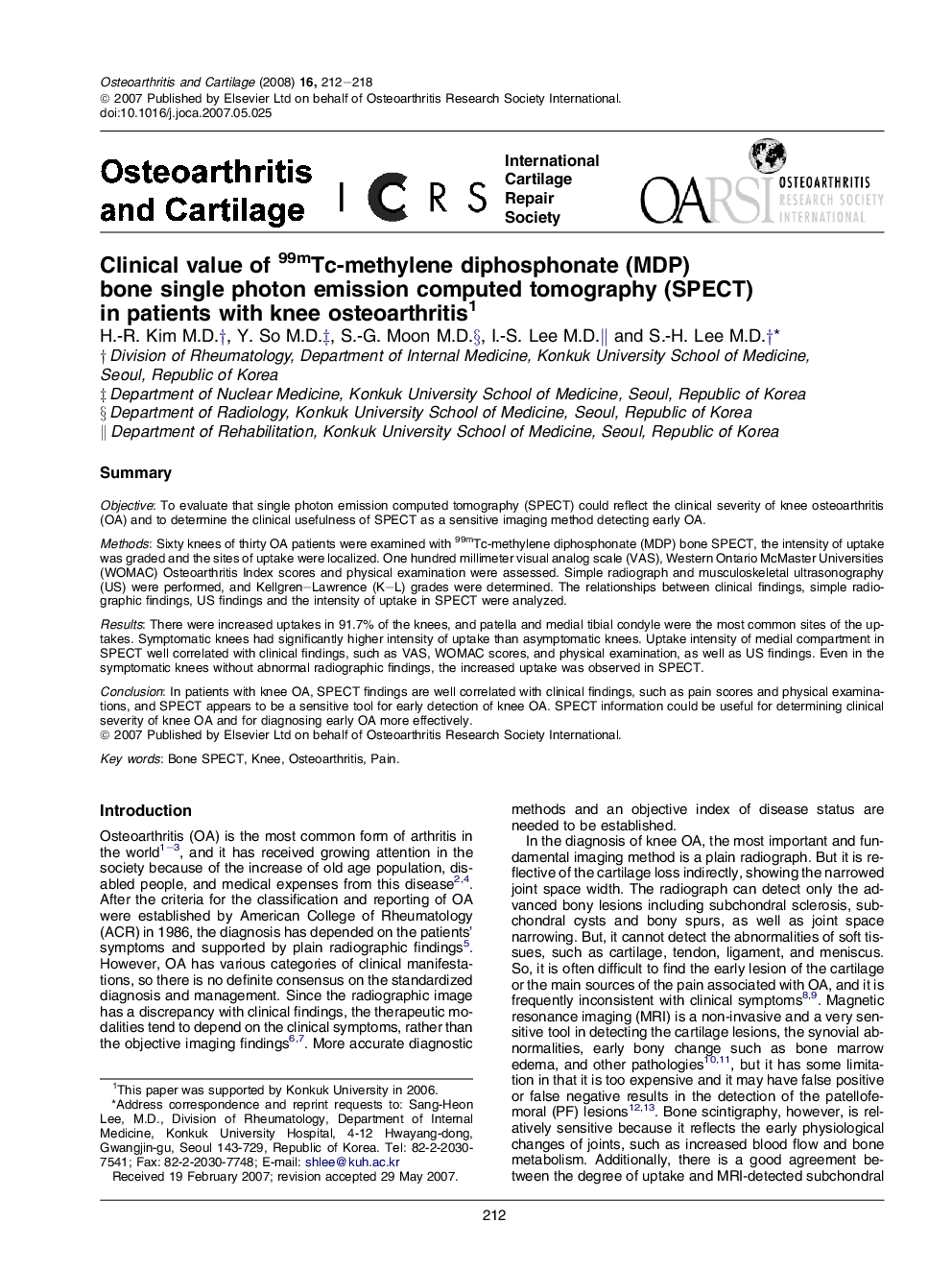| Article ID | Journal | Published Year | Pages | File Type |
|---|---|---|---|---|
| 3381521 | Osteoarthritis and Cartilage | 2008 | 7 Pages |
SummaryObjectiveTo evaluate that single photon emission computed tomography (SPECT) could reflect the clinical severity of knee osteoarthritis (OA) and to determine the clinical usefulness of SPECT as a sensitive imaging method detecting early OA.MethodsSixty knees of thirty OA patients were examined with 99mTc-methylene diphosphonate (MDP) bone SPECT, the intensity of uptake was graded and the sites of uptake were localized. One hundred millimeter visual analog scale (VAS), Western Ontario McMaster Universities (WOMAC) Osteoarthritis Index scores and physical examination were assessed. Simple radiograph and musculoskeletal ultrasonography (US) were performed, and Kellgren–Lawrence (K–L) grades were determined. The relationships between clinical findings, simple radiographic findings, US findings and the intensity of uptake in SPECT were analyzed.ResultsThere were increased uptakes in 91.7% of the knees, and patella and medial tibial condyle were the most common sites of the uptakes. Symptomatic knees had significantly higher intensity of uptake than asymptomatic knees. Uptake intensity of medial compartment in SPECT well correlated with clinical findings, such as VAS, WOMAC scores, and physical examination, as well as US findings. Even in the symptomatic knees without abnormal radiographic findings, the increased uptake was observed in SPECT.ConclusionIn patients with knee OA, SPECT findings are well correlated with clinical findings, such as pain scores and physical examinations, and SPECT appears to be a sensitive tool for early detection of knee OA. SPECT information could be useful for determining clinical severity of knee OA and for diagnosing early OA more effectively.
